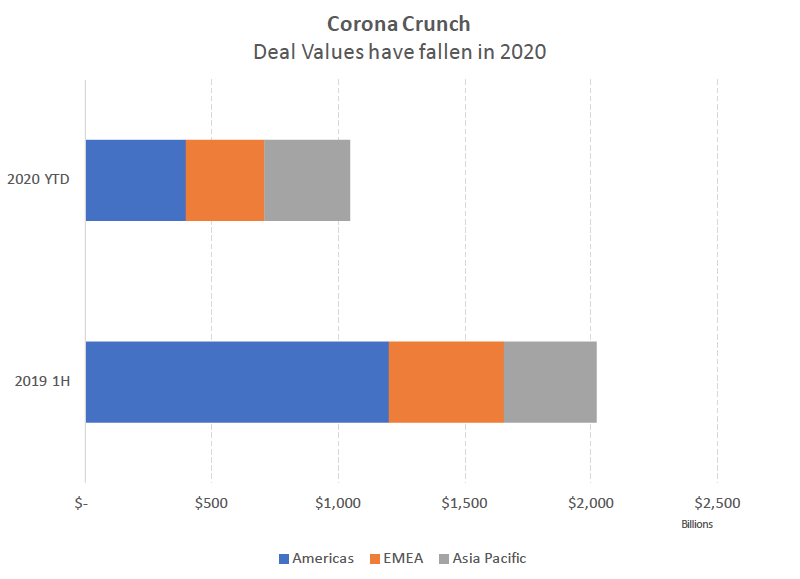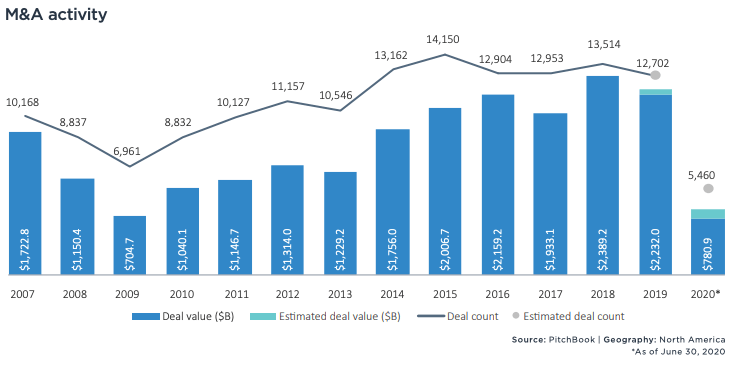Boeing’s 737 Max issues highlighted the company’s sacrifice of safety for financial performance, resulting in a tarnished reputation. The prioritization of profit over core values also damaged the FAA’s credibility and revealed a lack of accountability for top executives. This downfall serves as a reminder of the importance of maintaining core values and prioritizing them over short-term financial gains.

The stimulus has ended; what does that mean for the economy?
The stimulus from the CARES Act has ended, and so far, Congress cannot find a way to replace it. Democrats in the House have passed a bill, but Senate Republicans, lacking a unified approach, have waited until the end of the summer to propose a plan. Currently, Secretary Steven Mnuchin is negotiating with House Speaker Nancy Pelosi to find a compromise. So, what?
Well, without the stimulus, unemployment is expected to rise. Last week’s Bureau of Labor’s jobs report showed that the job gains from April slowed dramatically, adding just 661,000 jobs. The unemployment rate now stands at 7.9%, down from 14.7% in April. Currently, approximately 25 million people rely on jobless benefits to get by, and the outlook is worse. Last week, the Walt Disney Co. said it would lay off 28,000 people, and American Airlines Group Inc. and United Airlines Holdings Inc. announced 32,000 job cuts. These are just the massive layoffs; however, lots of smaller companies are laying off workers.
So far, most of the damage has been to low-income workers, but the pain is moving up the wage scale. A recent Wall Street Journal article pointed to a couple in New York who earned about $175,000, enough to cover the mortgage, two car leases, student loans, credit cards, and assorted costs of raising two daughters in the New York City suburbs. However, since COVID hit shutting down the courts, one of them, a lawyer, is unable to work, and the family is running low on savings. They can’t keep up with $9,000 in monthly debt payments, including mortgage installments.
In the U.S., consumer spending accounts for about two-thirds of gross domestic product, and as more people are unemployed, many will deplete their saving and stop spending. A fall in consumer spending affects everyone as we are all linked in this economy. If consumer spending falls, B2C companies suffer and lay off more people and stop buying from B2B companies, so the cycle continues. No one is immune.
While many have pointed to fall credit card debt levels during COVID, more worrying is the number of people behind on their mortgages, rent, and utilities. As we head into winter, with many facing evictions, no heat or water, the prospects are even worse. As some might recall from their economics class, the marginal propensity to consume is greater for those in lower-income brackets. Therefore, to boost the economy, middle- and lower-income Americans need to be able to consume. While the wealthy will spend some of the benefits they receive, they will spend far less, so the positive impact on the economy is limited.
Many fiscal conservatives have said that they are now concerned about the deficit and deterring people from working. It is nice to see they have finally found some courage; however, it seems more that they object to anyone they believe doesn’t deserve a benefit getting one. There was a deafening silence from this crowd with the passage of The Tax Cuts and Jobs Act (TCJA) in December 2017, which provided benefits to companies and the wealthy. Many in the Administration and other conservatives claimed that the TCJA would pay for itself. Unfortunately, not! The deficit increased since its passing, and Bloomberg’s analysis showed that most corporate tax cuts went for buy back shares. In my opinion, this spending on buyback is the leading cause of the stock market’s continued rise.
While some will claim that increases income for everyone, only about 10% of the population owns shares outside of a retirement plan. So, the impact of the rising market does little for overall consumption and the economy.
During the Great Recession, Congress failed to provide enough stimulus for a full recovery. It is in danger of doing the same again, and this time I fear the consequences will be far worse. I would advise all CEOs to what cash levels and liquidity, but at the same time, we need people spending to grow out of this hole.
Recent Posts
The Downfall of Boeing: A Lesson in Core Values
Resolutions, Here We Go Again.
In reflecting on 2021 resolutions, the author scored themselves in three categories and sought to improve success in 2022 by addressing friction points. Drawing on advice from social psychologist Wendy Wood, the author identified areas to reduce or increase friction in their failed resolutions. By making these adjustments, the author aims to enhance their goal achievement and encourages others to consider friction when setting resolutions.
You need to take an extended vacation. No, seriously, you do.
COVID has taken a toll on all of us. If you have not taken an extended vacation in a while where you disconnect, you need to now. You and your business will benefit.
Becoming Famous in Your Niche: The Success Story of Linn Products Limited
In a previous discussion, I highlighted the importance of being famous for something. Being well-known in your niche can help you: Concentrate on your strengths Connect with your target audience Communicate your offerings more effectively Receive referrals Identify...
Understanding and Optimizing Your Cash Conversion Cycle
Understanding and optimizing the Cash Conversion Cycle is crucial for business growth, as it impacts cash flow and the ability to access external capital. This cycle consists of four components: Sales, Make/Production & Inventory, Delivery, and Billing and Payments. To improve the Cash Conversion Cycle, companies can eliminate mistakes, shorten cycle times, and revamp their business models.
Discovering Your Niche: Why You Need to Be Famous for Something
As an entrepreneur, it’s crucial to specialize in a specific area and become famous for something, allowing you to generate referrals and build your brand. Understanding the “job” you’re hired for helps you stand out in the marketplace and communicate your value proposition effectively. By providing value to your clients, you can adopt a value-based pricing approach, ensuring your business remains competitive and maintains a strong market presence.
Rethinking Your Pricing Model: Maximizing Margins and Providing Value
Rethink your pricing model by focusing on the value you provide and your customers’ Best Alternative To a Negotiated Agreement (BATNA). This approach can help you maximize margins while delivering better value to your clients. Assess your offerings and brainstorm with your team to identify pricing adjustment opportunities or eliminate commodity products or services.
Do you know your Profit per X to drive dramatic growth?
I recently facilitated a workshop with several CEOs where we worked on the dramatic business growth model components. One of the questions that I had asked them beforehand was, "What is Your Profit/X?" The results showed that there this concept is not clear to many....
The War for Talent: 5 Ways to Attract the Best Employees
In today’s War for Talent, attracting the best employees requires a focus on value creation, core customer, brand promise, and value delivery. Clearly articulate your company’s mission, identify your “core employee” based on shared values, and offer more than just a salary to stand out as an employer. Utilize employee satisfaction metrics and showcase your company’s commitment to its workforce on your website to make a strong impression on potential candidates.
Are you killing your firm’s WFH productivity?
Productivity remained during WFH with COVID. However, further analysis found that hourly productivity fell and was compensated for by employees working more hours. What was the culprit – Meetings. Want to increase productivity, have fewer meetings.
















